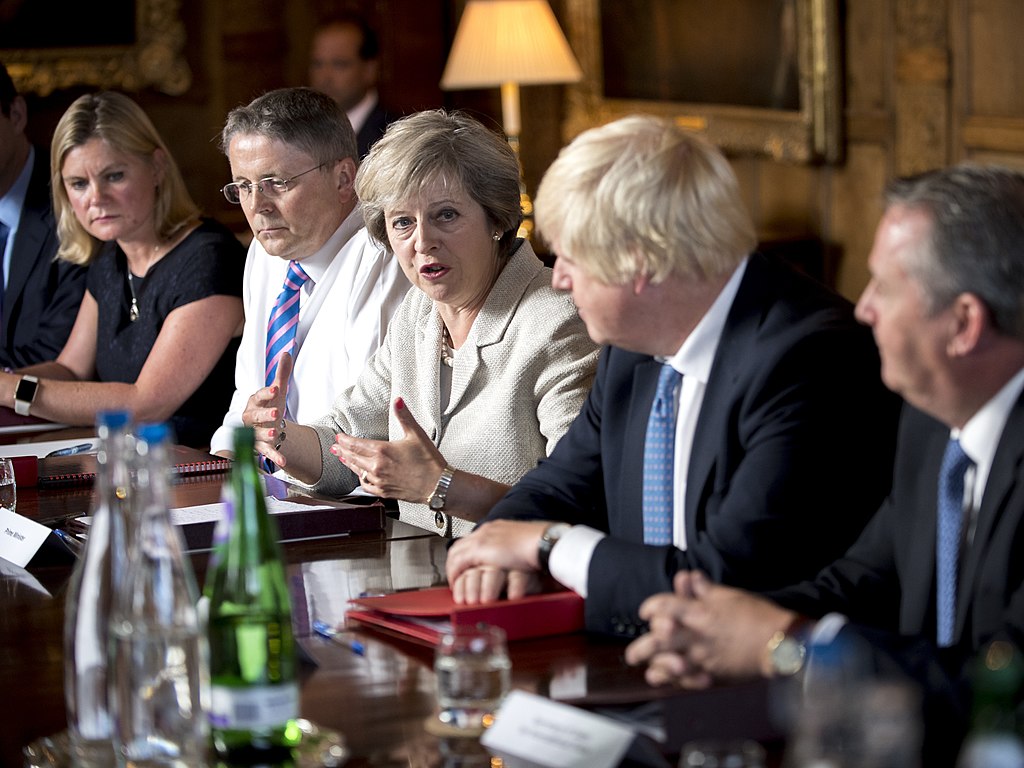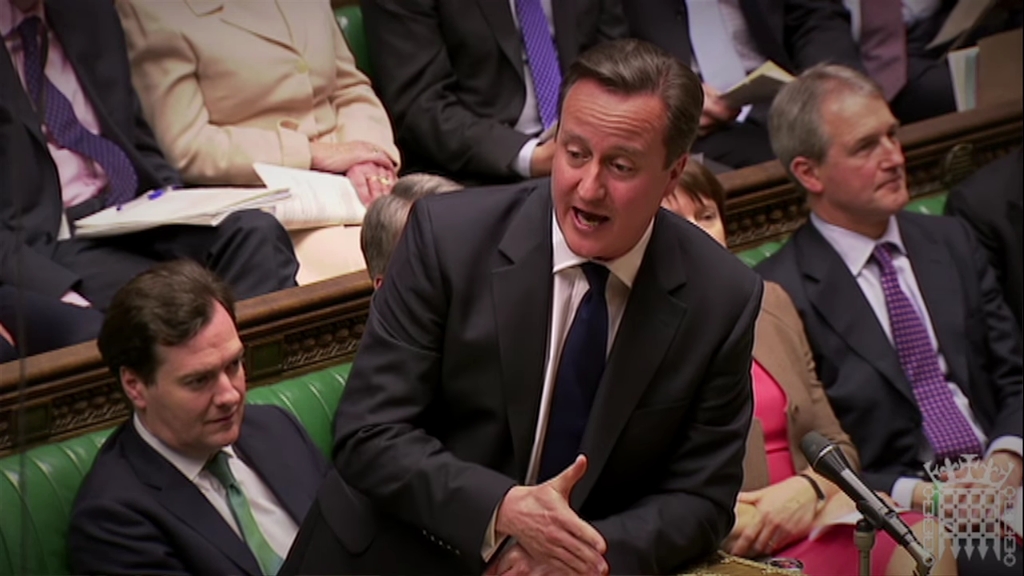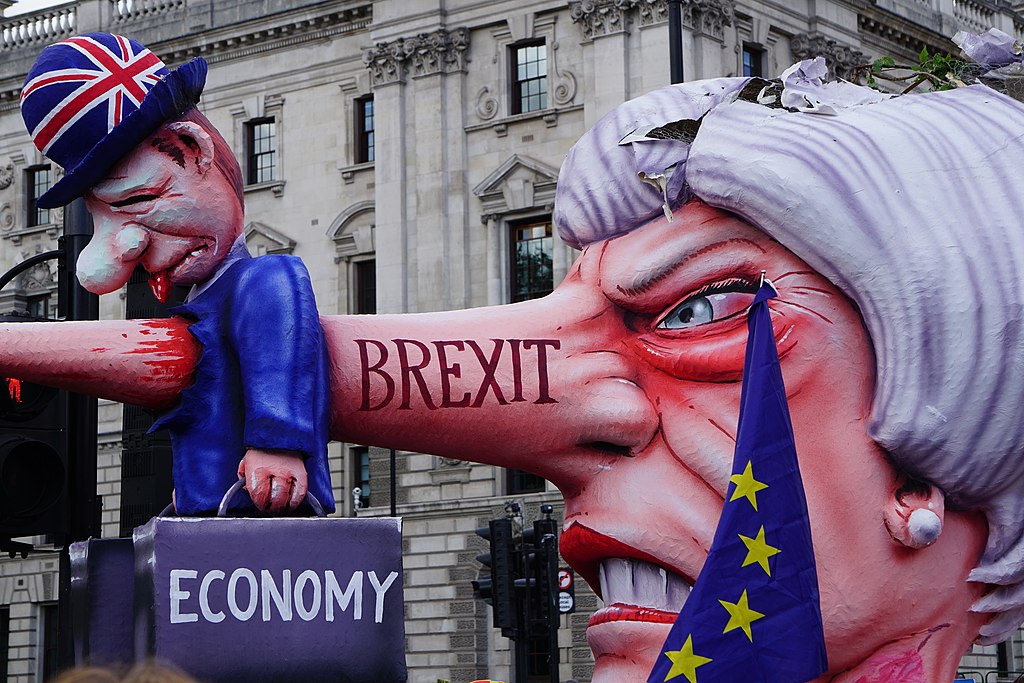
Wikimedia Commons, open government licence
Welcome, readers, to the third instalment in our biting series dissecting over a decade of Tory rule. Today, we tackle the tumultuous 2017 Tory manifesto – an era that epitomizes the Conservatives’ descent into political chaos and policy disarray. After our critical examinations of the 2010 and 2015 manifestos, we’re now delving into a period that escalated the Conservative party’s struggles with Brexit, leadership upheavals, and a myriad of unfulfilled promises.
This analysis goes beyond mere scrutiny of manifesto commitments; it’s a deep dive into a time when the Tories’ political narrative became more akin to a tragicomedy. We witnessed a carousel of leaders – May’s unsteady reign, Johnson’s controversial tenure that also got cut short, followed by Truss’s fleeting, economically tumultuous stint, and now Sunak’s attempt to steady a rocking ship that feels like it’s going to capsize at any moment. Each leader left an indelible mark of disarray and inconsistency, turning governance into a game of musical chairs with the nation’s future at stake.
In this piece, we’ll dissect the 2017 manifesto, not just for its content but for the broader context it set – a backdrop of Brexit-induced confusion and a party grappling with its identity. This analysis aims to cut through the political fog, offering a clear-eyed view of how the Tories’ promises stood up (or collapsed) under the weight of real-world challenges.
As we navigate through this convoluted chapter of British politics, remember, this isn’t just about the past; it’s a lens through which to view the present and future. So, prepare yourself for an unfiltered, breakdown of the 2017 Tory manifesto – a manifesto that promised stability but delivered weak and wobbly instead along with the start of a rollercoaster ride of political upheaval and policy pivots. Strap in – we’re about to explore one of the most turbulent periods in recent UK political history, where promises were made, broken, and lost in a whirlwind of leadership changes and national uncertainty.
Fact Sheet: The Tory Government (2017-2019) Government Tenure
Began: June 9, 2017 Ended: July 24, 2019 Leadership during 2017-2019:
Prime Minister: Theresa May (until July 24, 2019), Boris Johnson (from July 24, 2019)
Home Secretary: Amber Rudd (until April 2018), Sajid Javid (from April 2018 to July 2019), Priti Patel (from July 24, 2019)
Chancellor: Philip Hammond (until July 24, 2019), Sajid Javid (from July 24, 2019)
Foreign Secretary: Boris Johnson (until July 9, 2018), Jeremy Hunt (from July 9, 2018 to July 24, 2019), Dominic Raab (from July 24, 2019)
National Result
Composition of the House of Commons
The 2017 Tory Manifesto
Economy:
- Increase personal allowance to £12,500 and higher rate to £50,000 by 2020. ✅
- Raising the personal allowance – a deft move to win over middle-income earners. The Tories played it smart, easing the tax burden for many, yet leaving the bigger economic questions conveniently unanswered.
- Improve HMRC capabilities to clamp down on smuggling and border control post-Brexit. ✅ (Partial)
- Ambitious in theory, but in practice? A mixed bag. Strengthening border control sounds robust, but the real impact, especially post-Brexit, is a tangled web of unresolved issues and complexities.
- Spend more on research and development. ✅
- Pouring funds into R&D is like betting on the future – savvy, but with a whiff of uncertainty. It’s a strategic move, yet the fruits of this investment remain to be seen in the long run.
- Ensure businesses have access to reliable, cheap, and clean power. ❌
- A promise that sounds good on paper but flounders in reality. The pursuit of cheap and clean power is more of a tightrope walk than a clear path, reflecting the Tories’ struggle to balance economic growth with environmental concerns.
Health:
- Real terms increases in NHS spending, reaching £8bn extra per year by 2022/23. ✅
- Throwing money at the NHS – a classic Tory band-aid solution. While it seems like a generous gesture, it barely scratches the surface of the NHS’s deeper, chronic issues.
- New GP contract and changes to the contract for hospital consultants. ✅
- On the surface, it’s a move towards better healthcare management, but it’s more of a bureaucratic shuffle than a real game-changer in patient care.
- Retain the 95 per cent four-hour A&E target. ❌
- A target more missed than hit. This epitomizes the gap between Tory healthcare promises and the stark reality of NHS underperformance.
Education:
- Pump an extra £4bn into schools by 2022. ✅
- More funding for schools – a headline grabber, but is it enough? The education sector needs more than just a cash injection; it needs a comprehensive, long-term vision, something the Tories often overlook.
- Scrap free school lunches for infants in England, but offer free breakfasts. ❌
- A controversial swap, to say the least. It’s a classic example of robbing Peter to pay Paul, a move that sparked more outrage than applause.
- No school will have its budget cut as a result of the new funding formula. ❌
- A promise that fell flat. The reality is a labyrinth of budget cuts and financial juggling, leaving many schools grappling with less, not more.
Migration:
- Cut net migration to below 100,000. ❌
- The perpetual Tory mantra, yet always an unfulfilled dream. This promise remains more of a political chess piece than a practical policy, underscoring the complex nature of migration issues.
- Increase the levy on firms employing non-EU migrant workers. ✅
- A move that’s more about numbers than nuanced policy. It’s a blunt instrument approach to a complex issue, reflecting the Tories’ penchant for headline-grabbing simplicity over depth.
Brexit:
- Exit the European single market and customs union but seek a comprehensive free trade and customs agreement. ❌
- The Brexit behemoth – a promise mired in controversy and complexity. Exiting the single market was a seismic shift, but the journey since has been anything but smooth, leaving many questioning whether the Tories had bitten off more than they could chew.
Overall Percentage Fulfillment of the 2017 Manifesto: 55 per cent
The Tories’ performance in fulfilling their 2017 manifesto was, frankly, a bit of a damp squib. Scoring around 55 per cent, it’s clear that they bit off more than they could chew.
Economically, they kept harping on about fiscal responsibility, but the reality was more akin to stumbling in the dark. Their approach to public finances was less about strategic planning and more about political posturing. The infamous ‘Northern Powerhouse’? More like a Northern Power outage.
The healthcare pledges were another half-hearted attempt at patching up a system in dire need of comprehensive reform. Throwing money at the NHS without a clear plan is like trying to fix a leaking dam with duct tape.
[Fact check on May’s NHS claims: https://www.channel4.com/news/factcheck/factcheck-may-not-telling-the-whole-story-on-nhs-funding. Ed]
As for education, their funding promises were as shaky as a house of cards in a windstorm. Promising more funds for schools while the system is still reeling from previous cuts is like offering a plaster for a broken arm.
Immigration policies were all bark and no bite. Their tough talk on reducing migration numbers was a classic case of setting the bar too high and then limping under it.
In summary, the 2017 Tory manifesto was a blend of overambitious goals and underwhelming execution. It’s a classic example of political overpromise and underdeliver, leaving voters with more questions than answers.
The 2017 Tory Legacy: A Tale of Chaos and Broken Promises
The 2017 Tory government’s tenure was akin to a disastrous theatre production – grand in promises but a flop in execution. At the heart of this chaos was Brexit, a move as divisive as it was perplexing, plunging the nation into a whirlwind of political and economic uncertainty. The ship of state, rather than sailing smoothly, seemed to be navigating through a relentless storm, helmed by a series of captains, each more bewildered than the last.
The economy under this regime was a mirage – shimmering promises of fiscal prudence that vanished upon closer scrutiny. Healthcare and education pledges were like placing plasters on deep, festering wounds – superficial, inadequate, and failing to address systemic issues.
Immigration policies roared loudly but lacked real impact, highlighting a pattern of grandstanding over substantive policy-making. But Brexit remained the central fiasco – a muddled, ill-conceived venture that will be remembered as a watershed moment in British politics. It wasn’t just a policy; it was a political earthquake, fracturing the landscape and leaving a trail of division and discord.
Leadership during this period was more farcical than a slapstick sitcom. Since this time we have had a no stability in leadership, from May’s hasty retreat, Johnson’s bluster, to Truss’s economic misadventures, and finally Sunak’s diminishing presence, it has been a revolving door of one poor leader after the other, each leaving a unique stamp of disarray. It was like watching a game of hot potato, where the nation’s future seemed to be an afterthought in a bizarre power play.
This period’s legacy is marked by a string of unfulfilled manifesto pledges, misguided policies, and a bewildering array of leadership changes. It will be remembered as a time of political turbulence and governance missteps, where ambition and ineptitude collided spectacularly. The UK, once a beacon of political stability, found itself adrift in a sea of uncertainty, its direction uncertain and its people disillusioned.
In conclusion, the 2017 Tory manifesto and its aftermath stand as a stark reminder of the perils of over ambition and under-delivery. It’s a period that will undoubtedly be dissected and debated for years to come, a testament to how swiftly and severely political fortunes can turn, leaving a nation grappling with the consequences.









